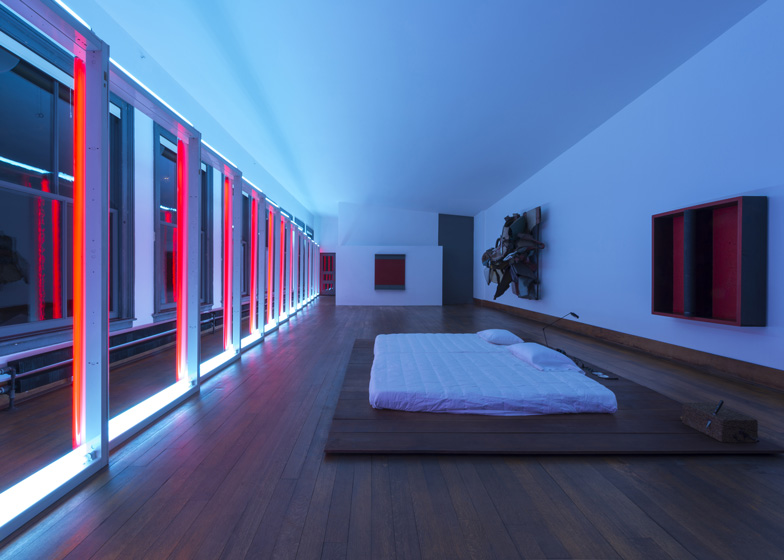The New York home and studio of the late American artist Donald Judd will open to the public next month following a three-year restoration (+ slideshow).
Led by New York-based Architecture Research Office (ARO), a team of consultants and engineers have restored the interiors of the five-storey residence at 101 Spring Street, where Judd lived and worked from 1968 until his death in 1994 and amassed a collection of over 500 artworks.
The project involved maintaining the open-plan layout created by Judd and reconditioning the timber floors and exposed plaster walls. The team also had to replace an existing spiral staircase to bring the building in line with current health and safety standards.
"Our goal has been to preserve Donald Judd's vision for the building and make it accessible to the public, while satisfying contemporary building requirements," said ARO principal Adam Yarinsky. "The entire design team worked with creativity, diligence, and sensitivity to resolve the complex challenges involved in reconciling these objectives."
The team meticulously catalogued the situation of every sculpture, painting and object in the house, including pieces by Judd himself as well as works gifted by artist-friends such as Claes Oldenburg, Carl Andre and Dan Flavin, plus older artworks by Marcel Duchamp, Ad Reinhardt and more. Following the restoration, each object was returned to its exact position.
The ground floor of the house was previously used by Judd as a living room and will now serve as an event and lecture space for the Judd Foundation, the charity responsible for the building. As visitors arrive, one of the first things they'll spot is a sculpture by Andre comprising a stack of bricks.
A Judd-designed kitchen with a wooden table and central stove features on the first floor, while the fourth floor accommodates a bedroom with a fluorescent lighting installation by Flavin along one side.
The restoration also included the exterior of the building, where the team replaced around 13,000 cast-iron pieces.
See more recent projects in New York City, including a stripy replica of a Frankfurt bar and a Camper store filled with ghostly white shoes.
Here are a few words from the Judd Foundation:
When Donald Judd's New York City building in the SoHo Cast Iron Historic District opens to the public in June 2013 after a three-year restoration, visitors will experience Judd's home and studio as originally installed by the artist. The restoration of 101 Spring Street began on June 3, 2010 (the artist's birthday) and will conclude three years later. Donald Judd lived in the building with his family beginning in 1968, and it was his New York studio until his death in 1994.
Guided visits will be offered for small groups by appointment through an online ticketing system and by telephone. Visitors will be guided through all floors of the home, including Judd's studio, kitchen, and his stately fifth-floor bedroom, which is installed with a floor-to-ceiling 1969 Dan Flavin fluorescent light piece, extending the length of the loft space.
Each floor will remain as installed by Donald Judd with pieces from his collection of over 500 objects, including original sculpture, paintings, drawings, prints, and furniture designed by Judd and others. Judd installed artworks by Jean Arp, Carl Andre, Larry Bell, John Chamberlain, Marcel Duchamp, Dan Flavin, David Novros, Claes Oldenburg, Ad Reinhardt, Lucas Samaras, and Frank Stella throughout the building, all of which viewers will be able to explore.
Overseen by board members Flavin Judd and Rob Beyer, the restoration project shares the same goal and mission of Judd Foundation: to preserve Judd's living and working spaces and promote a wider understanding and appreciation of Donald Judd's legacy. The New York City design firm Architecture Research Office (ARO), led Judd Foundation's project team of consultants, which includes a preservation architect and engineers.






